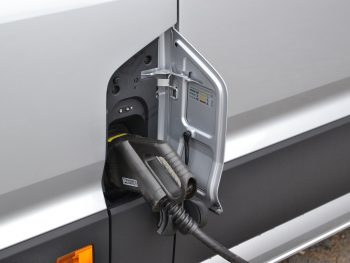UK fleet operators could replace 40% of their current light commercial vehicles with electric alternatives today – cutting costs and CO2 emissions.

The figures come from Masternaut as it launches its new fleet EV transition tool, MoveElectric – supporting fleets making the transition.
Using the new tool, Masternaut compiled a year’s worth of data from 37,252 vehicles and found that a total 1.6 million vans could go electric now in the UK – only requiring daytime charging in exceptional circumstances.
This transition from ICE fleets to EVs could reduce emissions by 8.3 million tons of CO2 a year, an equivalent to 7% of total CO2 emissions from transport in 2019.
To put this in perspective, CO2 emissions from transport have only gone down by 4.6% over the last 30 years.
Making the switch to electric would also enable fleets to reduce fuel costs by 79% on their replaced ICE vehicles.
Developed in close consultation with customers, Masternaut’s MoveElectric transition tool works by helping fleet managers to identify which journeys could be carried out by an EV instead of an ICE vehicle, based on parameters which reflect business needs and working patterns. Comparing real-time ICE data with that of EVs, businesses can now understand which electric vehicles are most suitable for their fleets.
Specifically, the research used a range limit of 200km (124 miles) per day to assess the suitability to switch to electric. While 200km is currently a widely adopted daily range, some vehicle manufacturers have recently introduced new electric van models with a 300km (186-mile) range – enabling more fleet vans to make the transition.
Masternaut said the MoveElectric tool’s use of comprehensive real-world data allows fleet managers to measure and demonstrate the wider benefits of the move to EVs, including efficiency, CO2 reduction and cost savings. This insight will also support the creation of data-led roadmaps to achieve the government-mandated shift to full electrification by 2030.
Alberto De Monte, business segment director OEM, EV and sustainable mobility at Masternaut, said: “Transitioning to electric is a logistical challenge and our customers need to be able to show the business case before making that change. The MoveElectric platform avoids the need to rely on estimates. Everything is calculated by reading information directly from vehicles currently in use. This allows us to give our customers a highly accurate understanding of what they can achieve without disrupting workflow or efficiency.”
He continued: “Our research shows that it is already possible to move significant portions of existing fleets to EVs and that ‘range anxiety’ is, in many cases, unfounded. Early fleet planning is essential to realise the opportunities available to fleets and to prepare for the unavoidable deadline of 2030. Fleet operators are unlikely to incur any additional costs when transitioning to electric, as long as they follow the normal vehicle replacement cycle of 4-5 years.”

